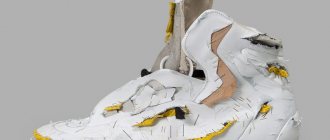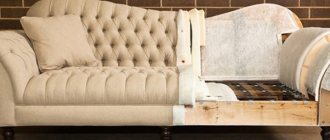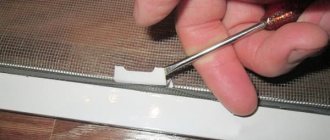Leather upholstery for furniture is considered one of the best materials. It combines strength and presentable appearance. But during use, stains and scratches will still appear. It is possible to carry out minor repairs to leather furniture on your own, although much depends on the nature of the damage. If the contamination or defect is not eliminated in time, the furniture will lose the value and richness of the color of the upholstery. With scratches and cracks, the situation is even worse - if repairs are not started in time, the crack can grow to such a size that it will be easier to buy a new sofa.
Leatherette sofa repair: it all depends on the scale of the problem
The first thing to do is assess the extent and nature of the damage. Typically, people need to order sofa upholstery for the following reasons:
- spots appeared on it;
- cracks, scratches or tears have appeared in one or two places;
- completely deteriorated - worn out, large holes formed in it.
Stains, scratches and small tears on a leather sofa, both natural and artificial, can be easily treated. But making a full carry on your own is more difficult.
Restoration of the upper protective layer
Over the years, furniture may develop bald spots or voluminous scuffs that cannot be corrected with paint. In this case, restoration masks should be used. Their essence lies in the fact that they are applied over the entire surface of the product, and not locally. Before applying a protective mask, the entire surface of the furniture should be treated, cleaned of dirt, dried, then sanded with a special sanding sponge, after which the upholstery should be degreased.
In essence, such masks resemble paint, but have a deeper and longer-lasting effect. After restoration with a restorative mask, your furniture will have its previous appearance for 2.5 - 3 years.
Masking cracks in leatherette
Liquid Skin does a great job of masking cracks. It is based on alcohol, which penetrates the top layer of skin at the site of injury. To hide cracks, follow these steps:
- Cut a piece of gauze the same size as the size of the injury.
- Apply gauze to the cracked area.
- Apply the solution with a spatula.
- After 10-15 minutes it is recommended to apply another layer.
After drying, you will notice that the damaged area and the artificial skin have become one. It is impossible to determine with the naked eye where the damage was.
Cuts
Dealing with cuts on leather furniture is a little more difficult than dealing with a regular abrasion or scratch. But this does not mean that it is impossible to correct the situation. In this case, a patch will help you. The material from which it will be made is not so important, the main thing is that it is dense and elastic. You will need tweezers, with which a patch slightly larger than the cut must be placed under the top layer of the leather covering of the furniture, then take a toothpick, dip it in special leather glue and with a precise movement, spread the adhesive on the inner surface of the leather around the cut. After this, gently press the skin onto the patch, while clearly aligning the edges.
Step-by-step instructions for use
It is best to treat cuts not with glue, but with liquid putty
Repairing leather furniture with your own hands is a simple process, but quite responsible. Below are detailed instructions on how to repair a leather sofa.
Instructions for using liquid leather for cutting furniture
- First of all, it is necessary to clean the damaged area from broken fibers and glue the edges of the crack or tear. To achieve the best results, the crack can be sewn up in several places, and the hole can be pre-sealed from the inside.
Damage to furniture upholstered in light leather
- Degrease the surface of the leather sofa with detergent and dry thoroughly.
Washing a leather sofa before restoration
- Choose the right color for “liquid skin”. If you need to choose a complex color scheme, the kit includes a special table of colors and tones. With their help, you can determine the color scheme that needs to be mixed to obtain the desired shade.
If the cut is deep, you need to glue the inside or make a patch
Table of liquid leather color combinations for the product
- Apply the mixture to the prepared area of the leather sofa. This can be done with a brush or a piece of foam rubber.
Applying liquid skin with a spatula to damaged areas
- Smooth the layer of product applied to the damaged surface of leather furniture. If you don’t have a spatula at home, you can do this with an unnecessary ruler or plastic card.
Upholstery looks better after the second coat
- Remove any contact with the repaired area before the mixture is completely dry.
Useful notice. To give the repaired area a porous pattern that matches the entire surface of the leather sofa, it is necessary to glue a piece of leather (natural or artificial) of the appropriate texture to the surface being treated and press firmly for a few seconds.
In the absence of a fragment of fur, you can create your own template from an ordinary paper napkin. To do this, a layer of the mixture is applied to it, and the napkin is applied to the undamaged area, where the relief appears especially clearly. After this, the resulting stencil should dry completely. Used in the same way as in the first option.
The result of wearing liquid skin with before and after photos
There are times when, when restoring leather furniture, the result obtained does not live up to expectations. This is mainly due to the following reasons:
- the leather sofa has a large defective area;
- wrong skin tone;
- ignore the recommendations established in the instructions for use of the product;
- The pattern of the piece of leather used for embossing does not match the overall texture of the surface of the leather sofa.
The result of the correct color of liquid leather for repair
Video
Did you like the article? Follow new ideas from the world of construction, design, and useful tips in our channel. Subscribe to us in Yandex.Zen. Subscribe.
When choosing leather furniture, you should know that genuine leather is considered a more practical material than ordinary fabric. It is durable, non-staining, elastic, pleasant to the touch, and has a long service life. But, unfortunately, even such upholstery does not last forever and tends to lose its original appearance. No matter how carefully you treat leather furniture, sooner or later the product may take on a shabby and aged appearance.
Owners of leather furniture quite often encounter scratches, cuts, various holes and other defects that spoil its surface. The ideal option would be to reupholster the old covering, but it is worth remembering that this is not a cheap pleasure and in some cases it will be easier and cheaper to carry out minor repairs with your own hands. It is for such cases that the most common cases of defects and methods for dealing with them were selected /
Minor sofa upholstery repair
If we are talking about cracks, severe abrasions and other damage to the surface of artificial leather, then a detergent, of course, will not help. To prevent the space from becoming larger, its edges can be sealed with tape. But this is a temporary measure, and such repairs to the sofa upholstery don’t look very good. How to restore artificial leather so that the damage is not noticeable at all? If you have material in the right color, use it. How to seal the damaged area? Just cut a piece of the desired shape and size, spread it with superglue, carefully apply it to the break and press.
What to do if you don't have the material in the right color?
If the scratch or tear is not very large, you can use special paints or sprays. All you need to do is apply the indicated product to the damaged skin and wait a bit for it to dry. Apply several coats of paint or spray to achieve the desired thickness, but be careful not to leave unsightly marks on the surface.
Today there are complete kits for restoring damaged artificial leather on sale. These include:
- several jars of paints of different colors;
- pieces of fabric that differ in texture;
- spatula for applying a suitable product.
These kits are generally designed for car owners who need to spruce up their seats. But they are also great for renovating a sofa in your living room or bedroom.
Another useful product is “liquid synthetic leather”. It is an alcohol-based polymer. Use it to repair sofa upholstery as follows:
- you need to take a piece of bandage or gauze in size corresponding to the location of the injury;
- apply it to the damaged area;
- apply the solution with a spatula;
- wait 10-15 minutes for it to dry.
Basic damage to furniture restoration
from burns and scratches, to “I want it in a different color” and “sudden embossing.” Reupholstering furniture is expensive and time-consuming. Because of a small “kock”, changing the upholstery of an entire pillow or an entire chair is at least not profitable or logical. There are two options: accept it or restore it. You can try to repair the damage yourself, but this is quite troublesome, complicated and the price is close to calling a professional craftsman who has been restoring leather furniture every day for several years. Such a master will perform a “small miracle” in your presence and will simply remove the following from the leather upholstery of your furniture: Burns will remove burns from hookahs and cigarettes on leather sofas, armchairs, poufs (ottomans) Scratches will restore scratches and nicks from the claws of pets (cats, dogs, hamsters, raccoons...) from women's heels, scratches from zippers and metal rivets on clothes. Stains and abrasions will clean food and drink stains, remove ink from pens. Paints over scuffs from clothing. It will remove the consequences of improper cleaning with aggressive chemicals and remove stains from spilled nail polish remover. Renew and prepare will update the appearance of leather furniture and eco-leather furniture. We will completely repaint it in a different color to match the interior or paint individual elements. We will repair tears and cuts in the leather, we will restore the consequences of unsuccessful transportation, we will repair cuts due to careless opening of the package with a stationery knife. A mechanical imprint will remove traces of unwanted “embossing” on the leather from pressure with a pen , from a hot mug and other unnatural imprints that do not go away “on their own.”
How to restore eco-leather on a sofa
Leather furniture looks impressive and elegant. People are increasingly refusing to buy expensive sofas and armchairs upholstered in genuine leather due to cost and ethical principles. An inexpensive alternative has become eco-leather, which in appearance is practically no different from natural leather, and in some respects even surpasses it.
Liquid leather is rightfully considered the best material for restoration and restoration of eco-leather. The polymer material fills cracks, cuts, teeth and claw marks.
Restoration work is carried out in several stages:
- the surface is leveled, threads and fibers are removed;
- the edges of the cut or hole are perfectly sewn or glued from the inside;
- eco-leather is cleaned with liquid detergent and dried;
- the desired shade is selected by mixing several basic colors;
- liquid leather is applied with an artistic brush or foam rubber;
- The repaired sofa is left to dry for a day.
Attention! You can remove stains and even layers with a student ruler or a regular plastic card.
How not to ruin your sofa completely
If abrasions and damage occupy a large area, then the furniture cannot be restored. It is also unlikely that it will be possible to return the previous look to a sofa upholstered in eco-leather in an exotic color (light green, turquoise, coral, terracotta, lilac). At home, you will not be able to recreate a complex and ornate pattern with a napkin or an old piece of leather.
A little about the choice of materials for repairs
The leader among manufacturers of restoration pastes is the French company Saphir. Restoring cream extends the life of damaged, worn and discolored products. The product is suitable for smooth surfaces; when applied, it creates a durable and elastic layer that repels water. Sapphire does not stain clothes and dries quickly.
Recommendations for caring for leather furniture
If you follow a few simple rules, you can avoid damage to leather furniture. The main condition for the safety of furniture made of genuine leather is the best microclimate. Such furniture should be placed no closer than 1.5 meters from the heat source, and the optimal humidity level will be from 65 to 70%. Every year it is worth cleaning the coating 2-3 times using a special conditioner or taking it to dry cleaning. Impurities from the surface of the skin should be removed immediately, as once they are absorbed into the pores it will be difficult to remove them. In order to remove stains and perform regular maintenance, special furniture wipes are used. If you use alcohol, oil, or soap solution to clean furniture made from genuine leather, the material will dry out very quickly and the structure will begin to deteriorate (cracks will form on the surface). To clean a sofa or chair, you should use special products.
In order for the product to remain intact, it should be treated once a month with a protective spray or wax, which will reduce the degree of hygroscopicity and porosity of the material. If the water in your house is hard, then you should never use a dampened rag to care for furniture. This will lead to the formation of plaque on the skin, the material will lose its elasticity and become rigid. You should also avoid bringing your light-colored sofa into contact with dyes, including clothing such as jeans. You should not use organic solvents such as white spirit and acetone for regular cleaning. With such compositions it is impossible not only to clean natural leather, but leatherette furniture will also lose its paint and protective layer, and stains will appear on the varnish surface.
Methods for repairing various defects on eco-leather
Think carefully about what you are going to restore, determine the type and scale of the “disaster”. There are several ways to repair an eco-leather product. Which depends on the type of damage. Let's take a closer look at them.
Stains, abrasions, microcracks
If the upholstery has acquired a dull, unkempt appearance over time, it should be thoroughly cleaned of stubborn dirt and stains. For deep cleaning, use concentrated soapy water, then blot dry and gently wipe with 70% alcohol or wine vinegar.
Oil stains can be effectively removed with dishwasher gel: apply it to the stain and leave for 2-3 hours, then remove with a damp cloth.
You can get rid of stubborn stains with gasoline: apply a little on a soft sponge, lightly rub the stain and leave for 30-40 minutes. Remove with a sponge and soapy water.
There are several ways to update worn upholstery on a sofa, ottoman, armchair or car, as well as remove cracks:
- Olive oil. You can take the cheapest one. Apply the oil to the damaged area and rub in in a circular motion with a cotton swab. Wait 1-1.5 hours for the oil to be completely absorbed. Evaluate the result and repeat the procedure if necessary.
- Shoe polish. Colorless will add shine, colored will paint over minor scuffs. It is important to choose the cream strictly to match the color of the product and wait for it to dry completely after painting.
- Permanent marker. Its ink is very resistant to water. Clean the surface from dirt. Carefully outline the microcracks with a marker that exactly matches the color of the product. Wait 20-30 minutes. It can be applied in several layers.
- Pigment varnish. Suitable for environmentally friendly leathers with a glossy surface. Rare shades, for example very bright ones, are obtained by mixing primary colors. Apply to a degreased surface.
- Special paint. Be careful when choosing a shade - if you can't find the perfect match, choose a shade that's a little darker. Before painting, degrease the fragment with alcohol. Spray the aerosol paint with gentle movements from a distance of 20-30 cm, apply the composition from the bottle with a slightly moistened foam sponge, patting. The applied layer must be very thin to prevent cracks from forming. Try not to paint “healthy” areas of the surface; if stains form, remove them immediately with a dry sponge. After drying, the paint can be reapplied.
Try to remove stains on eco-leather immediately. To prevent scratches and microcracks from appearing for as long as possible, regularly clean it with caring compounds: waxes, oils, polishes. This not only protects the product, but also repels dust and dirt.
Scratches, punctures, snags
Scratches and burrs are damage to the top layer of the material. Cats often refuse them. To get rid of scratches and punctures, you can use the following means:
- Nail polish. After cleaning, carefully apply the polish in a very thin line. It can be transparent or similar in color to the coating. For a matte surface - matte varnish, for a glossy surface - regular.
- Touching furniture. The method of action is reminiscent of a clerical queue. You can find it in specialized furniture stores. Shake the bottle vigorously before use. Apply with a brush in 2-3 layers. Wait until completely dry, then wipe the treated area with a soft, damp cloth.
- Furniture wax. It can be soft and hard. Simply rub the scratches with soft wax. If there are a lot of them and they are large, use a spatula or a regular kitchen knife. Leave for 15 minutes, carefully remove excess. Polish the treatment with a cotton cloth. Hard wax is more practical and durable, but working with it requires skills. First you need to melt it, then work on the scratch and the area around it. This must be done quickly, as hard wax hardens within a minute. Finally, sand the treated area well with flannel.
Another special product for masking scratches is furniture colored pencil. It is effective, but does not last long; you must keep it updated.
Cuts, cracks
Cuts and cracks are more complex damages than superficial cuts, as they affect the entire structure of the material, even the filling of furniture or car seats. To eliminate the defect, you can use superglue or universal leather glue. Apply it to the crack using a toothpick or match. Then press the edges tightly for a few seconds. Remove excess glue immediately. If adhesion is noticeable, sand it and apply paint.
If the defect is very large, then glue alone will not be enough; you will need to put on an inner patch. Use eco-leather that is identical in texture, and if you are going to paint the patch, it doesn’t matter what color it is. Using forceps, insert the patch under the incision and smooth it out. Sand the back side with “zero” sandpaper; this will increase adhesion. Using a thin stick, apply glue to the back side of the eco-leather around the cut and, aligning the edges, press firmly with your hand. To make sure that everything sticks evenly, place a load on the patch for 1 hour. If necessary, polish and paint.
Required materials and tools
Restoring leather sofas begins with assessing the extent of damage. Depending on this, materials and tools for work are selected.
To repair cracks, you will need paint for leather surfaces, possibly “liquid leather”, which restores the integrity of the material. To apply patches or appliqués, you need glue for leather products, pieces of natural material or eco-leather, matching the color of the upholstery or multi-colored, depending on the idea of the composition, thread and needles.
If the repair involves partial or complete replacement of the upholstery, you will need a cloth of the required size and special tools: screwdrivers, keys, screwdriver, pliers, stapler and anti-stapler. When reupholstering furniture, you need a sealant - foam rubber or padding polyester.











